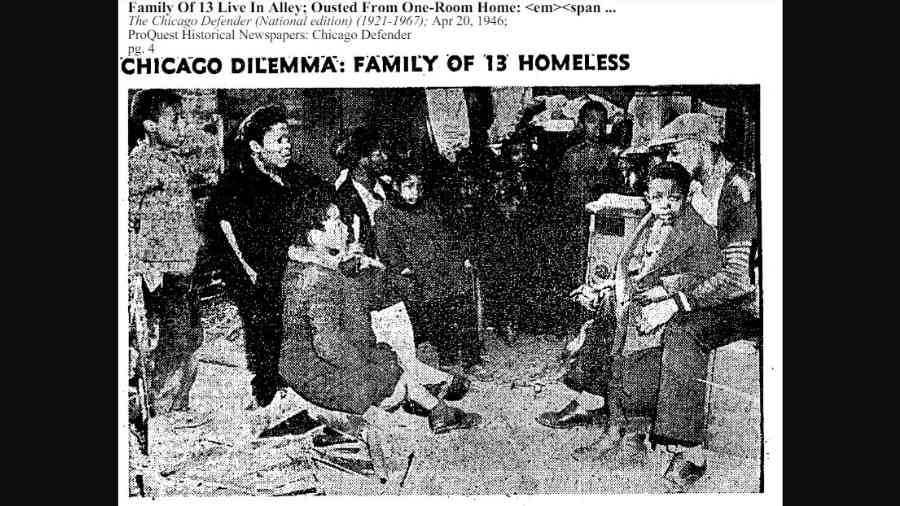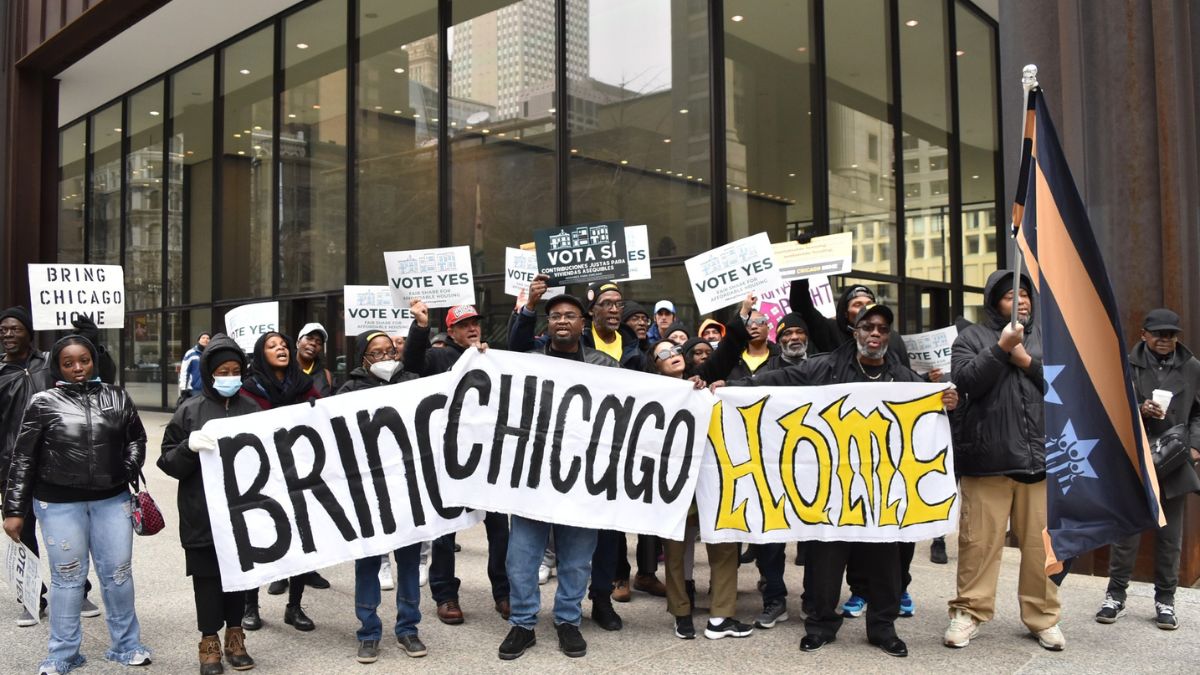Almost seven out of 10 homeless persons in the city of Chicago are Black. They are either living under someone else’s roof, temporarily staying at a shelter or living on the streets.
However, experts say that it is no coincidence that, despite comprising nearly 30% of the total population, Black people are overrepresented among the city’s unhoused population.
The “epidemic” of Black homelessness in Chicago echoes back to the discriminatory policies that were in place when hundreds of thousands of African Americans headed north to the city during the Great Migration, which occurred over 50 years during the 20th Century.
Restrictive covenants prevented Blacks from moving to different parts of the city, so they were often constrained to substandard housing. Due to redlining, many were denied bank loans and insurance to purchase homes in their own communities.
The lack of access to affordable housing was so pronounced that even Martin Luther King, Jr., near the end of his life, helped lead the Chicago Freedom Movement, which inspired the Fair Housing Act of 1968.
Despite the passage of this landmark piece of legislation, which was to theoretically allow people of color the ability to live wherever they pleased, segregation has done the work that restrictive covenants and redlining used to do.
Thus, a persistent and predominant theme spanning generations continues to echo in the city of Chicago: Black people lacking access to safe, affordable housing.
The Chicago Defender recently participated in a journalism initiative with The Field Foundation, Public Narrative, and other area media outlets to explore why racism and segregation exist in Chicago and how their effects manifest today.
Below are the stories we produced for this important series:
The video essay, Black and UnHoused in Chicago: How Housing Segregation Fueled a Homegrown Crisis (By Christa Carter-Williams), highlights what’s at stake concerning homelessness and the people on the verge of losing their homes.

Black and Unhoused: How Black Chicago’s Fight for Affordable Housing Echoes Through Generations (Story 1 by Tacuma Roeback) examines a critical historical moment in the city’s history when one man vowed to abolish restrictive covenants. His actions inspired a landmark literary work.

Chicago’s Enduring Legacy of the Black and Unhoused (Story 2 by Nicole Jeanine Johnson) takes a hard look at the impact of these acts of discriminatory housing practices, including the effects of the failure of a controversial referendum that would have addressed the homelessness and affordable housing scarcity.

Finally, Legacy of Inequitable Housing Access: How a Black Family’s Story Echoes Today’s Fight (Story 3 by Tacuma Roeback) focuses on the eviction of a Black Chicago family in 1946 and how their plight reverberates to this day.
This article is part of the Segregation Reporting Project, made possible by a grant from Healing Illinois, an initiative of the Illinois Department of Human Services and the Field Foundation of Illinois that seeks to advance racial healing through storytelling and community collaborations.
The project is inspired by “Shame of Chicago, Shame of a Nation,” a new documentary that addresses the untold legacy of Chicago’s systemic segregation.
Managed by Public Narrative, this endeavor enlisted five local media outlets to produce impactful news coverage on segregation in Chicago while maintaining editorial independence.



